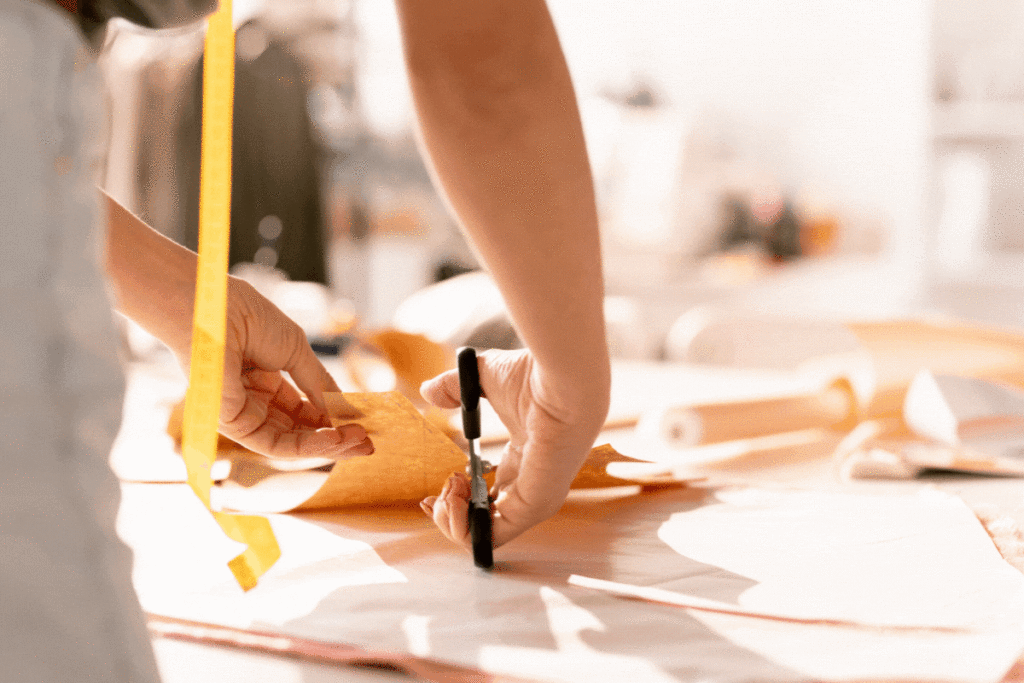Understanding the Role of a Fashion Pattern Maker
Before delving into the intricacies of fashion pattern making, it’s important to understand the role and responsibilities of a fashion pattern maker. As a pattern maker, your primary goal is to translate a designer’s vision into a tangible pattern that can be used for garment production. You need to have a strong understanding of garment construction, fabric properties, and body proportions to create well-fitting patterns.
Developing Technical Skills
To become a successful fashion pattern maker, you need to develop a solid foundation of technical skills. This includes knowledge of pattern drafting, draping, and grading. Pattern drafting involves creating patterns from scratch using measurements and basic pattern blocks. Draping, on the other hand, involves manipulating fabric directly on a dress form to create patterns. Grading refers to the process of scaling patterns up or down to create different sizes.
Mastering Pattern Drafting Techniques
Pattern drafting is a fundamental skill for fashion pattern makers. It involves creating patterns using measurements and basic pattern blocks. Understanding how to take accurate body measurements is crucial for creating well-fitting patterns. Additionally, you need to learn how to manipulate basic pattern blocks to create different garment styles. Practice is key when it comes to mastering pattern drafting techniques, so be prepared to spend time honing your skills.
Exploring Draping Techniques
Draping is another technique used by fashion pattern makers to create patterns. It involves manipulating fabric directly on a dress form to achieve the desired shape and fit. Draping allows for more creativity and experimentation compared to pattern drafting. By draping, you can create unique and innovative garment designs. Learning draping techniques can greatly enhance your pattern making skills and open up new possibilities in your design process.
Understanding Garment Construction
To create accurate patterns, it’s essential to have a deep understanding of garment construction. This includes knowledge of different sewing techniques, seam allowances, and fabric properties. Understanding how garments are constructed will help you anticipate and resolve any potential issues that may arise during the pattern making process. It’s also important to stay updated with industry trends and techniques to ensure your patterns meet current standards.
Embracing Technology
In today’s digital age, technology plays a significant role in pattern-making. Fashion pattern makers are increasingly using computer-aided design (CAD) software to create and modify patterns. CAD software offers numerous advantages, such as increased accuracy, efficiency, and the ability to easily make adjustments. Familiarizing yourself with CAD software will give you a competitive edge in the industry and make your pattern-making process more streamlined.
Gaining Practical Experience
While theoretical knowledge is important, practical experience is equally crucial for becoming a skilled fashion pattern maker. Consider seeking internships or entry-level positions at fashion design studios, garment manufacturers, or pattern-making companies. This will provide you with valuable hands-on experience and allow you to learn from experienced professionals in the field.
Continuing Education
Fashion is constantly evolving, and it’s important for fashion pattern makers to stay updated with the latest trends and techniques. Consider enrolling in fashion-related courses or workshops to expand your knowledge and skills. There are several reputable institutions, such as New York University (NYU), Parsons School of Design, and the Fashion Institute of Technology (FIT), that offer fashion design programs and courses. Additionally, online platforms like Yellowbrick offer specialized courses in fashion design and pattern making.
Conclusion
By following these tips and dedicating time and effort to your craft, you can become a skilled fashion pattern maker. Remember, becoming a master in any field takes practice and perseverance. So, embrace the challenges, stay curious, and never stop learning. With determination and passion, you can excel in the exciting world of fashion pattern-making.
Key Takeaways:
- Fashion pattern makers play a vital role in translating a designer’s vision into tangible patterns for garment production.
- Developing technical skills in pattern drafting, draping, and grading is essential for becoming a successful fashion pattern maker.
- Mastering pattern drafting techniques involves understanding body measurements and manipulating pattern blocks to create different garment styles.
- Exploring draping techniques allows for creativity and innovation in pattern-making.
- A deep understanding of garment construction, sewing techniques, and fabric properties is crucial for creating accurate patterns.
- Embracing technology, such as computer-aided design (CAD) software, can enhance efficiency and accuracy in pattern making.
- Gaining practical experience through internships or entry-level positions is valuable for honing pattern-making skills.
- Continuing education, through fashion-related courses and workshops, keeps pattern makers updated with industry trends and techniques.
To further enhance your skills and knowledge in fashion pattern making, consider enrolling in the FIDM Fashion Design online course and certificate program offered by Yellowbrick. This program provides comprehensive training and insights from industry professionals, empowering you to excel in the exciting world of fashion pattern-making. Don’t miss out on this opportunity to take your career to new heights.





